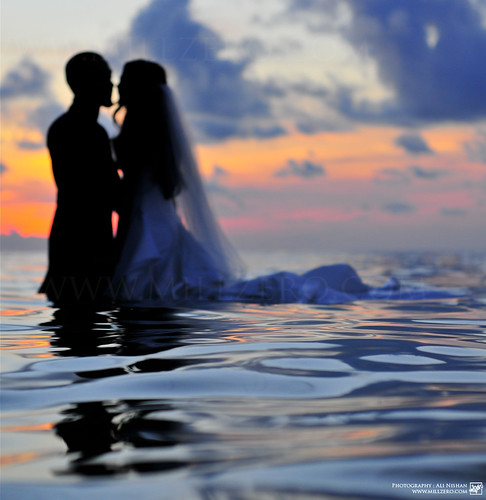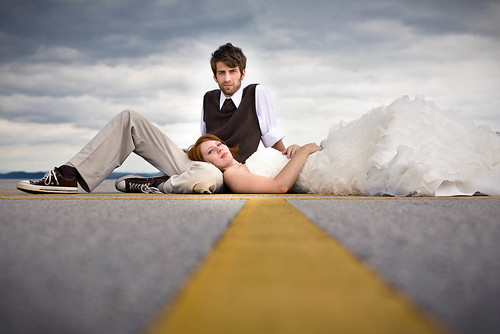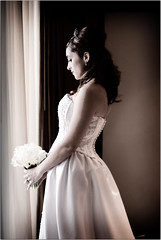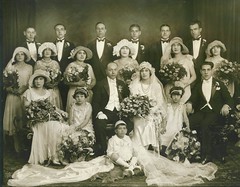Calling the Shots at Weddings – Tips for Amateur Photographers
This article is contributed by Sarah Scrafford, who regularly writes on the topic of Photojournalism programs. She invites your questions, comments and freelancing job inquiries at her email address: [email protected].

photo credit: millzero.com
Getting married is one of the most significant events in our lives, and we’re all looking to cement memories of that special day for posterity through videos and photographs. This makes wedding pictures exceptional, as the occasion does not repeat itself for most of us. While professional photographers are likely to do a great job of capturing the event, there are times when the bride and groom prefer a close friend or relative to step up to the occasion. If you’ve been designated as the photographer for the day because you own a pretty good camera and are known for your amateur photography skills, here’s how you can make sure you do a pretty decent job that earns you more than a pat on the back:
- Make sure your equipment’s up to scratch
You cannot afford to be caught unaware with a camera that refuses to bow to your wishes while the ceremony’s taking place. Make sure your gear is in working condition and that you have an equally good backup camera. Besides this, you’ll need memory cards, batteries and chargers (I’m assuming you’re going digital) to back you up in your efforts. You’ll need between 8 and 10 megapixels in strength on a digital SLR camera in order to get the best pictures. If possible, find yourself an assistant who can help with your equipment and also take a few candid shots while you handle the more formal ones. - Case out the location before the actual day
You need to be familiar with the location well before the actual event so that you can decide on the vantage positions from where you can get the best shots. Besides this, if you’re supposed to get pictures of the bride and groom and their parties on the way to the venue of the wedding and the reception, you need to know where you can position yourself along the way so that you can get some good shots. - Talk to the bride and groom to discuss the kind of pictures they want
Some couples prefer a minimum amount of pictures while others want to go the whole hog and get everything that’s happening on camera. Discuss the needs of the bride and groom and make plans accordingly. -
Make sure you get all the formal shots needed
You don’t want to be the one responsible for the displeasure of disgruntled relatives who find they’ve been left out of the photo album. So make sure you get everyone who counts on camera. To ensure that you don’t mess up, get someone from the groom’s side and someone from the bride’s side to help you out with the arrangement and preparation for the shots. - Be ready and prepared
There are no chances for action replays or reshoots at weddings, so make sure you’re prepared with a fast camera and faster fingers. Also, don’t delete any pictures from your digital cache until you’re sure you don’t want to print them as part of the final album.
Make sure your efforts make the day even more memorable, no matter how many years go by.

photo credit: kel niemann
This article is contributed by Sarah Scrafford, who regularly writes on the topic of Photojournalism programs. She invites your questions, comments and freelancing job inquiries at her email address: [email protected].


Life is Colourful
January 28, 2009Sarah, just brilliant tips! This is making me feel like that I could have grabbed the Nikon SLR instead of Sony digital T200, and try some of these brilliant tips with SLR camera than the digital one.
Mattias Wirf
January 28, 2009Wow, I really like the first image. But I guess they didn’t have the ceremony in wet cloths? 😉
the_wolf_brigade
January 28, 2009Thanks, I really needed this!
I’ve got two coming up very soon – but all on film….
Martin
January 29, 2009It’s also worth mentioning that most churches have low levels of lighting, and you may not be able to use a flash, so a fast lens and a body that can handle high ISO settings is definitely worth having.
Renting camera gear is surprisingly cheap, so if you don’t have a body and/or lens that’s quite as good as you want, it may be worth renting some gear. Renting an additional body also means you’ll have a backup body (this article was targeted at amateurs, and I’m sure most amateurs do not have a spare body…).
Dan
January 29, 2009Great article with excellent tips. Martin has a good point. Before I shoot weddings, I make it a point to talk to the preacher before hand, about the use of a flash during the ceremony, and any other items of concern to them. Keep up the good work.
Allan Tyler
January 30, 2009I can feel the change, a better change from the past. I really impressed with all modern techniques and thoughts because we must have changed with changes around us.
Joanie
February 2, 2009Great advice for any type of shooting. Location scouting is so easy, but how many take the time to do it? And how many of us are familiar with a location and don’t stop to think it may change from time to time, or that what we think are “set in stone” parameters might actually be something we can alter? Case in point, local nightclub relies way too much on red gels. Shooting a concert there is difficult and most images are overpowered by the red. Oddly enough, after four years of shooting this same location, I finally had the opportunity to talk with the man in charge of lighting before the show. Not only did he turn off the red lights, he painstakingly adjusted the spots for the performers (this part is what lead to us chatting and the removal of red lighting). My shots were dramatically different and it took but a moment to ask a simple question.
ingrid
February 3, 2009I agree with each of these tips..especially the know your location and know what your couple wants..so there will be less surprises of the not so good kind.
paula
February 12, 2009great article, makes the task seem not-so-impossible. thanks 🙂
Marsha
March 31, 2009Hello
I am a wedding coordinator looking for an amateur photographer who wants experience. I have a budget wedding coming up on June 27th and am looking for someone to take photos.Please contact me as soon as possible..
Marsha Starr
Joanie
April 1, 2009Marsha, where are you located and how can someone get in touch with you?